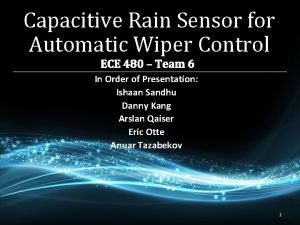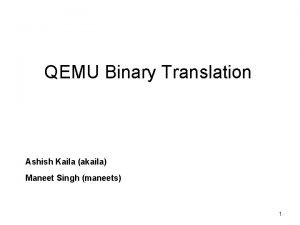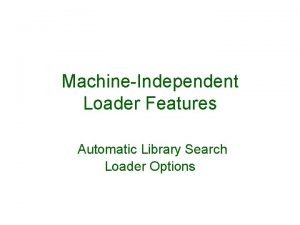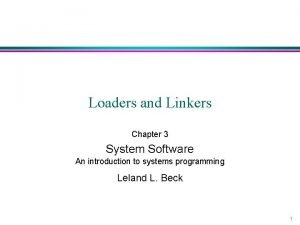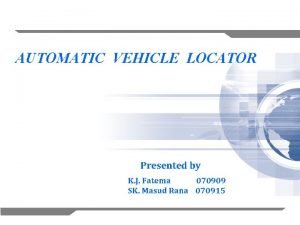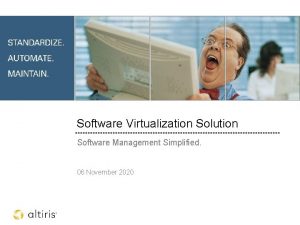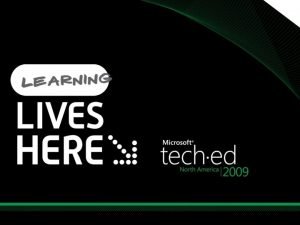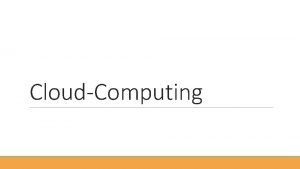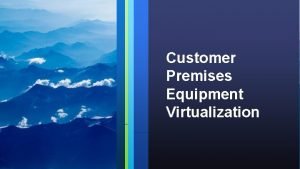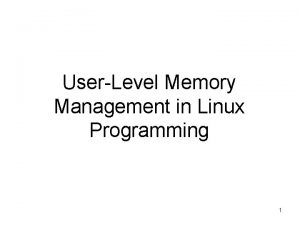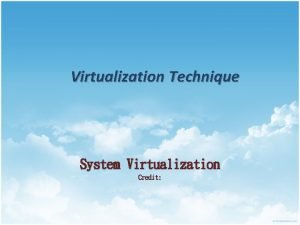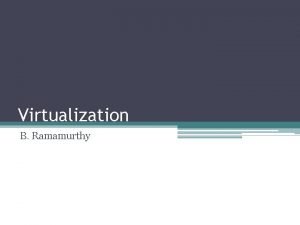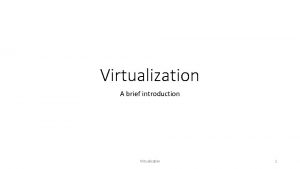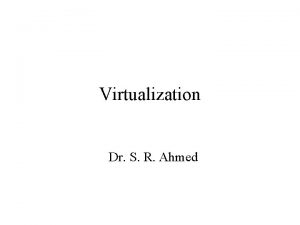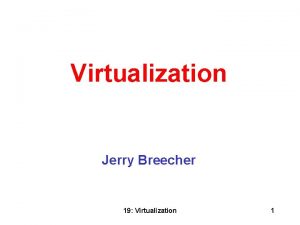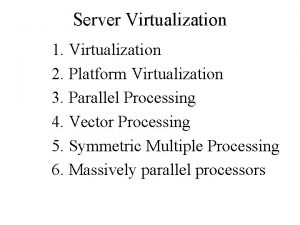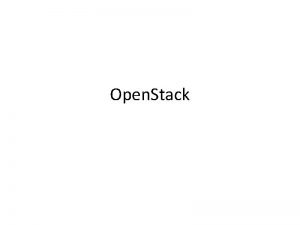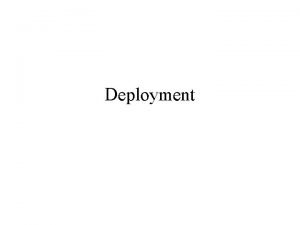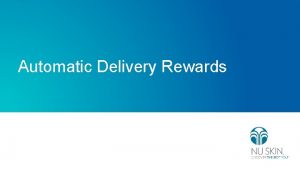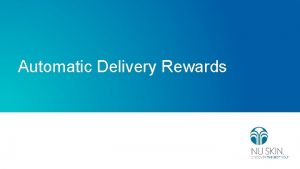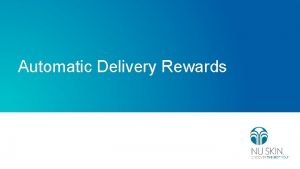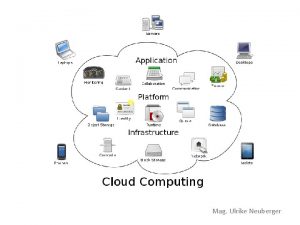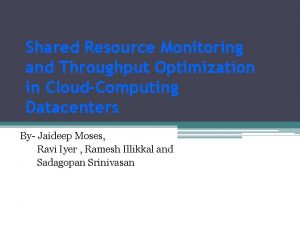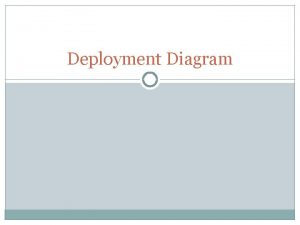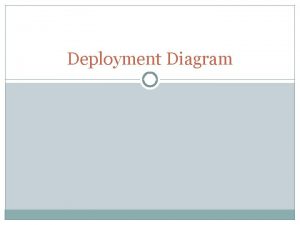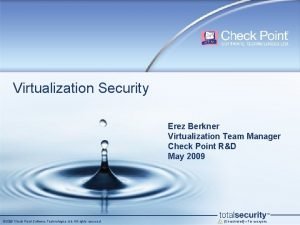Automatic software deployment using userlevel virtualization for cloudcomputing






























- Slides: 30

Automatic software deployment using user-level virtualization for cloud-computing Future Generation Computer System (2013) Youhui Zhang, Yanhua Li, Weimin Zheng

Outline • • Introduction The framework Performance test Conclusion

Outline • • Introduction The framework Performance test Conclusion

Introduction (1) • Infrastructure cloud service providers deliver virtual hardware and system software in their datacenters, based on the demand from customers • It is necessary to deploy application software in similar way

Virtual Appliances (VAs) • It is a pre-built software • VA-based method can reduce time and expenses

VA drawbacks • Lack of flexibility • Inefficiency of storage

Lack of flexibility Virtual Software A Appliance A Virtual Software B Appliance B Virtual Appliance A+B Template Virtual Appliance A+B OS

Inefficiency of storage r e larg s i d a e h Software r e v o Software e g a r o St OS OS OS Software OS OS

Introduction (2) • This paper introduces mechanisms to isolate application software from OS • Application software can be deployed in a fine granularity to increase the flexibility and decrease the storage overhead • We call such application software as on-demand software

Outline • • Introduction The framework Performance test Conclusion

Function 1 - Software preparation • Cover software into the on-demand mode • On-demand software is stored in the software depository for users’ selection

Preparation of on-demand software • software can be regarded as containing three parts: ØPart 1 includes all resources provided by the OS ØPart 2 contains what are created/ modified/ deleted by the installation process ØPart 3 is the data created/modified/deleted during the run time

Preparation of on-demand software(cont’ d)

Preparation of on-demand software(cont’ d) • Snapshot is taken to build the on-demand software

Function 2 - Software selection • A customer can choose the wanted OS, as well as any number of software in separated stages

Function 3 - On-demand deployment • When the customer actually uses the chosen software, will it be streamed from the data server and run locally without installation.

The runtime environment of on-demand software • Construct a runtime environment where software can locate and access any necessary resources • Runtime environment redirects all accesses for Parts 2 and 3 to the actual storage positions and guides other visits (for Part 1) to the local OS

The runtime environment of on-demand software (cont’ d) • The resource modified will be moved into Part 3

Function 4 - Software customization • The VA-based solution, it is difficult to implement this function efficiently

User-level file system • On-demand software is stored in the central depository and presented as files/ folders on a virtual local drive in the customer’s VM

On-demand software VS Virtual appliance(VA) On-demand software VA It can communicate with other programs(on-demand software) running on the same host machine through the file system No The runtime environment operates above the OS, it can distinguish the User’s customization modifications made by different software No Communicate with other software

System overview

Optimizations • Content-addressable storage • Data cache

Content-addressable storage • On-demand software is partitioned into shards • Compute the hash value of every shard, and the same values mean the corresponding shards are identical.

Data cache • The replace strategy is based on the usage frequency

Outline • • Introduction The framework Performance test Conclusion and future work

Comparisons of start-up time.

Comparisons of running time

Outline • • Introduction The framework Performance test and analysis Conclusion

Conclusion • This paper provides a framework to decouple application software from VM images to improve the deployment flexibility for cloud computing • Compared with VA-based solutions, it also improves the storage efficiency • Users’ customization can been separated inherently and efficiently for reuse
 Rain sensing automatic car wiper project
Rain sensing automatic car wiper project Binary translation vmware
Binary translation vmware Which of the following is machine independent language
Which of the following is machine independent language Estab in system software
Estab in system software Automatic vehicle locator
Automatic vehicle locator Svs altiris
Svs altiris Gartner application virtualization
Gartner application virtualization Kontinuitetshantering i praktiken
Kontinuitetshantering i praktiken Typiska drag för en novell
Typiska drag för en novell Tack för att ni lyssnade bild
Tack för att ni lyssnade bild Returpilarna
Returpilarna Varför kallas perioden 1918-1939 för mellankrigstiden?
Varför kallas perioden 1918-1939 för mellankrigstiden? En lathund för arbete med kontinuitetshantering
En lathund för arbete med kontinuitetshantering Underlag för särskild löneskatt på pensionskostnader
Underlag för särskild löneskatt på pensionskostnader Vilotidsbok
Vilotidsbok Sura för anatom
Sura för anatom Densitet vatten
Densitet vatten Datorkunskap för nybörjare
Datorkunskap för nybörjare Stig kerman
Stig kerman Hur skriver man en debattartikel
Hur skriver man en debattartikel Delegerande ledarstil
Delegerande ledarstil Nyckelkompetenser för livslångt lärande
Nyckelkompetenser för livslångt lärande Påbyggnader för flakfordon
Påbyggnader för flakfordon Arkimedes princip formel
Arkimedes princip formel Publik sektor
Publik sektor Jag har gått inunder stjärnor text
Jag har gått inunder stjärnor text Presentera för publik crossboss
Presentera för publik crossboss Argument för teckenspråk som minoritetsspråk
Argument för teckenspråk som minoritetsspråk Plats för toran ark
Plats för toran ark Treserva lathund
Treserva lathund Fimbrietratt
Fimbrietratt
